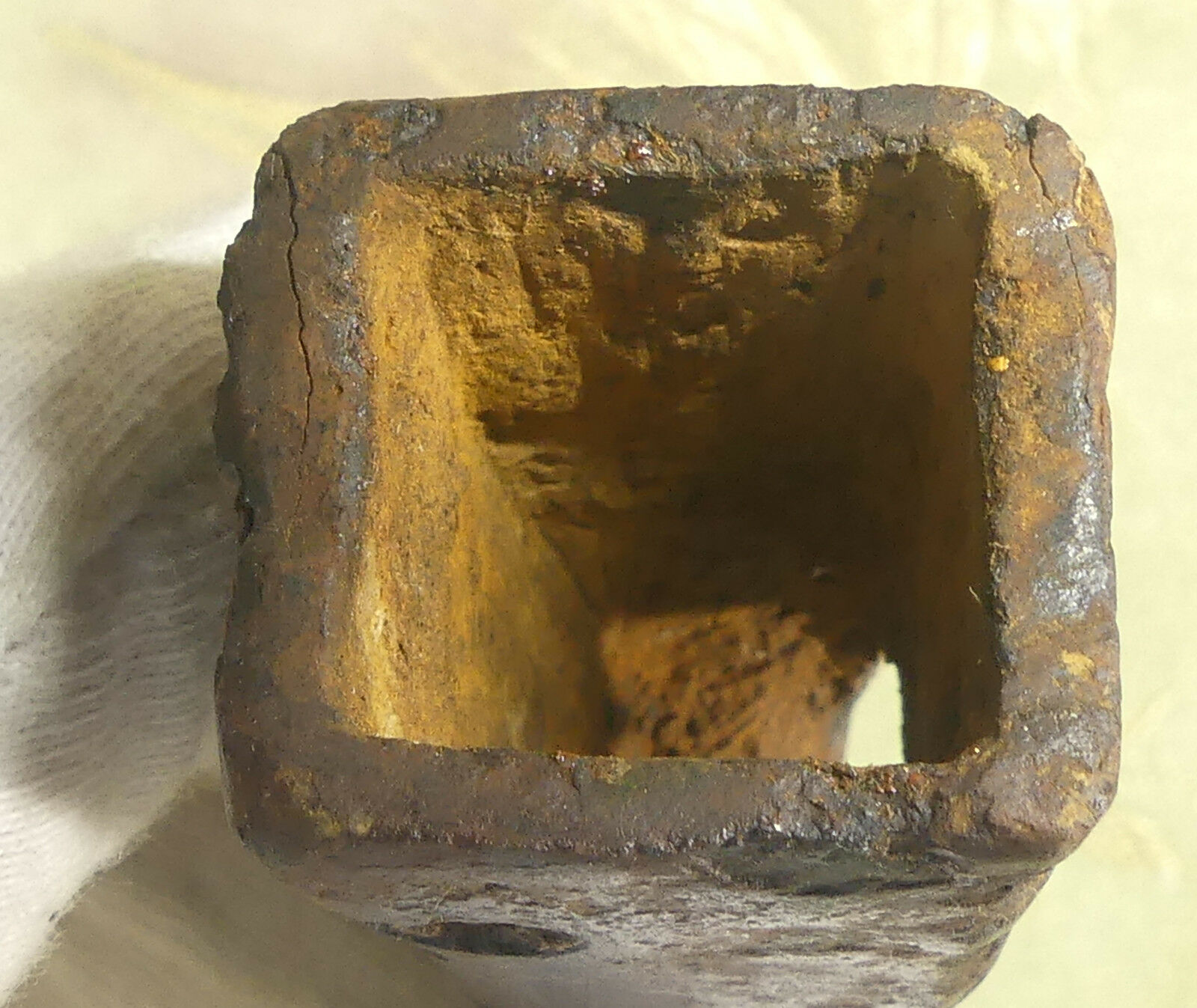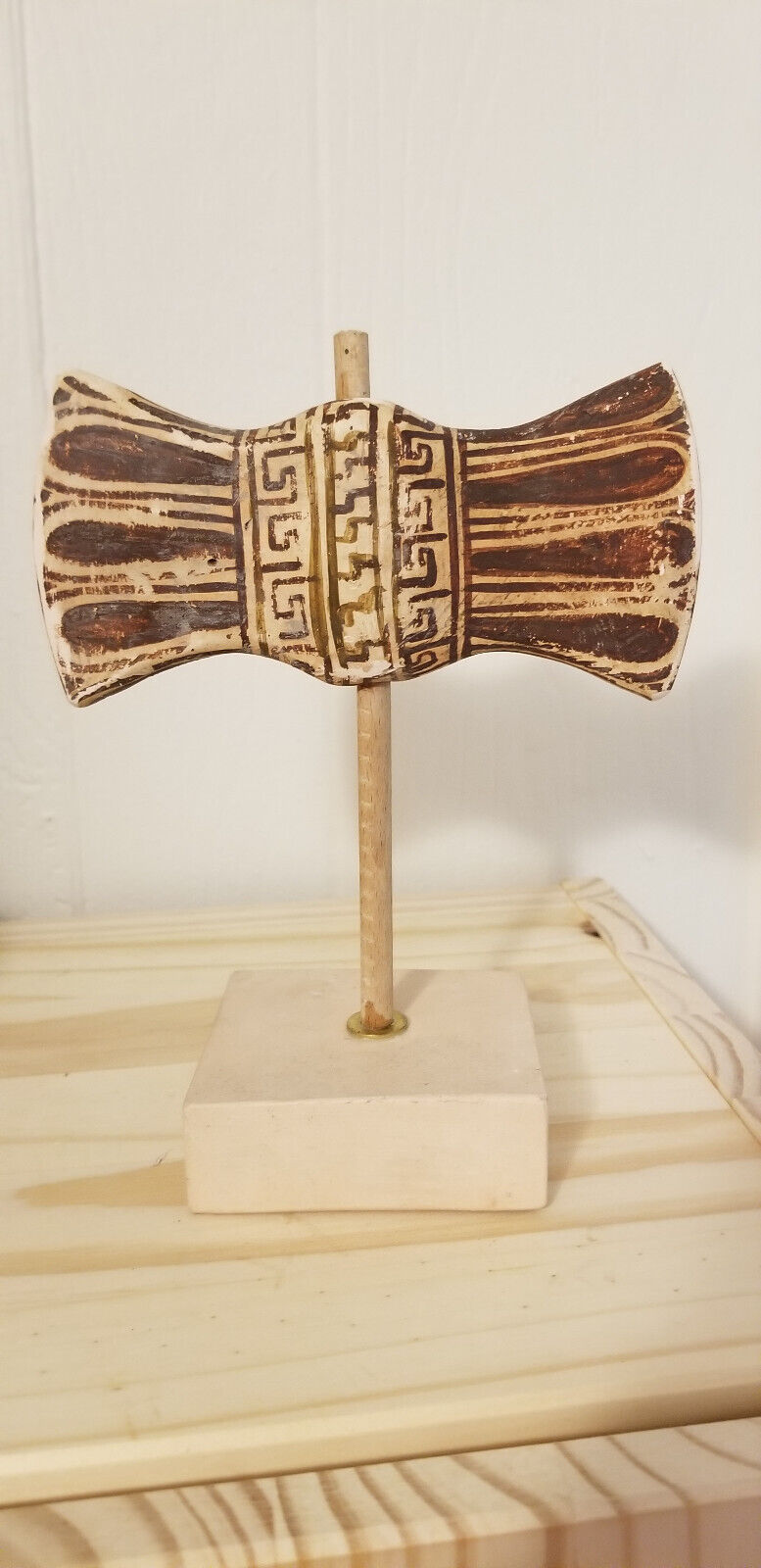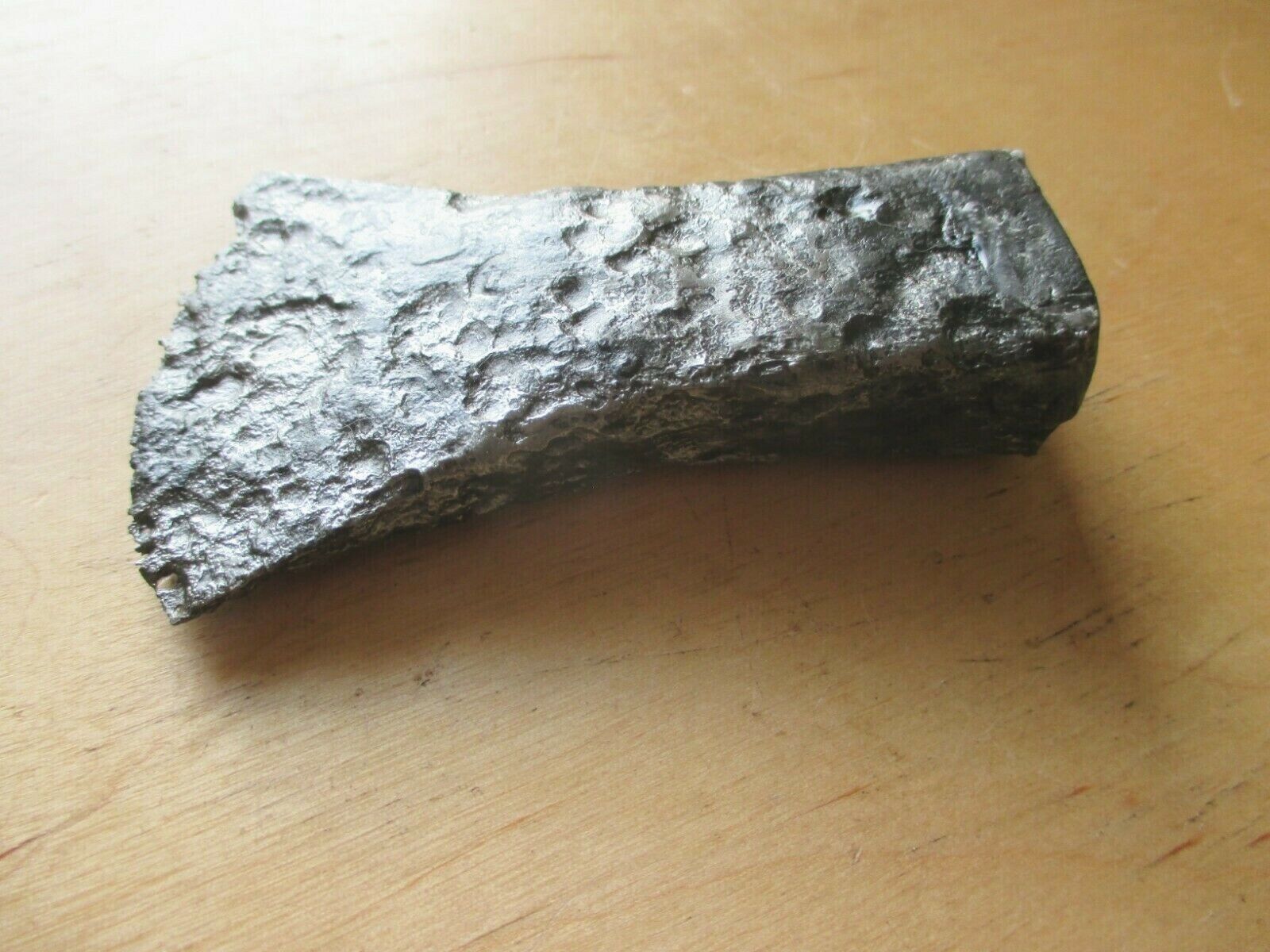-40%
Ancient Scythian Warrior's Ritual/Burial 4" Iron Ritual Battle Axe c. 400-700 AD
$ 290.39
- Description
- Size Guide
Description
ANCIENT CIVILIZATIONSArtifacts, Antiques & Fine Collect
i
bles
Ancient Scythian Ceremonial or Votive Axe
Square Socketed Iron Battle Axe
North-Iranian Saka and
Scythian
Peoples
400—700 AD
Item: Ancient Scythian Ceremonial or Votive Square-Socked Axe
Material: Iron
Length: 4” (104 mm)
Height:
2.12” 54 mm)
Weight: 6.5 oz. (184 gr.)
Civilization:
North-Iranian Saka and Scythian Peoples
Est. Date: 400—700 AD
Condition: This ancient Scythian artifact shows heavy oxidation/pitting and has been professionally cleaned, conserved, and treated with a special sealer developed and formulated to aid museums in ancient metal preservation. It is protected by a museum approved, micro-crystalline wax by Renaissance Wax to reduce further oxidation.
The patina shows beautiful traits only found in authentic ancient weapons.
Ancient Weapons in Scythian History {Courtesy of WIKIPEDIA}
This small, ancient ceremonial iron axe head dates to about 400 AD to 700 AD. This smaller size was intended for ceremonial or votive purposes and
not
made for or used in actual warfare.
It would have been offered in a ritual ceremony to the gods for a successful battle or perhaps entombed with a fallen warrior for his use in the afterlife.
Scythian Warriors and Weapons
According to Herodotus, the Scythians were ruthless and nearly invincible warriors who made cloaks from their victim’s scalps and drank from their skulls and sacrificed one out of every hundred prisoner of war. Wealthy Scythians reportedly gilded the insides of the skulls of their enemies and used them as drinking cups.
Scythians are credited with creating the first truly effective cavalry and employing tactics described as an ancient version of the
blitzkrieg
. They attacked their enemies on horseback and cut down their enemies with weapons shaped like this smaller, ritual example. They were difficult to fight against because they traveled swiftly on horseback and their nomadic ways made them difficult to attack and even find their base of operations.
I
GUARANTEE
this axe head is ancient and authentic or your money back!
NOTE: This ancient axe head is still sharp and you must be 18-years-of-age or older to bid on it.
Please check with local laws if it is legal to own in your state/county/city. THANKS! :)
Note:
Please ask any questions you may have before you bid! Thanks for Looking!
Per e-Bay's rules, PayPal only please!
THANKS!
FREE SHIPPING includes INSURANCE for all 50 United States.
ANCIENT CIVILIZATIONS
Artifacts, Antiques & Fine Collect
i
bles
Ancient Ritual Celtic Axe Head
Celtic Votive Offering to the Gods
c. 1000—500 BC
Item:
Ancient Celtic Votive Axe Head
Material: Pottery
Est. Date:
c. 1000 BC—500 BC
Weight:
2.8 oz. (80 gr.)
Length:
2.7" (70 mm)
Width:
1.6" (40 mm)
Provenance: Found near Ternopil, Ukraine, in the Carpathian Basin
DETAILS
This rare, early Votive Celtic axe head was molded from clay and fired approximately 2,500 years-ago.
Even small, ritual axes such as this one were thought to be immensely powerful to ward off evil spirits and to grant wishes.
The greatest number of recorded offerings were promised or given to the gods as thankfulness for favors bestowed or intelligently anticipated, while other offerings were offered due to fear.
{
Source: Acropolis Museum in Athens
}
Because of this association with power, many bronze items were buried with their owners or makers, while pottery items were tossed into rivers and marshes as votive offerings.
This small, pottery, votive axe head has a wonderful patina of green algae and white minerals (largely calcium) that strongly suggests it was thrown into a river or presented to the gods at a temple/oracle over 2,500 years-ago.
Small axes were never toys for children, and instead were only found in the tombs of kings and warriors or as votive gifts at oracles and temples.
{
See Acropolis Museum in Athens}
Greatest number of recorded offerings were promised or given as thankfulness for favors bestowed or intelligently anticipated, others were offered due to fear.
The discovery and sale of such artifacts from this era is always a cause for excitement, and to find such items of beautifully preserved votive items on the market is quite momentous.
While bronze, votive axes are more common, ones made of pottery are extremely rare as the clay pottery can rapidly deteriorate in water if not fired at a high enough temperature.
Ancient Greek Votive Axe Head
Small Axe Dedicated to the Temple Gods
In ancient Greece, the practice of dedicating objects to deities was common.
It appears to have been a natural outcome of gratitude for the benefits received by a person who asked for a god’s assistance. The dedicated objects could be large or small, depending upon the nature of the request.
For example, the nine archons at Athens took an oath upon entering the office that they would dedicate a gold statue at Delphi that was equal in size to them if they transgressed the laws.
Gold, jewels, statutes, silver, bronze offerings or even a small as a piece of terracotta pottery could be offered to the gods.
Archeologists believe that the ancient Greeks thought the gods would be more likely to grant their wish or request if the applicant for their benefits promised something of value in return—an offering. The Romans had a phrase “
voti reus
” that means “condemned to pay a vow” once a prayer had been granted by the gods.
Temple officials would inventory and catalog these votive objects and in the case of precious metals would record the weight of each item or the number of jewels in a necklace.
Possible offering to Zeus or to Ares, the God of War.
Price & Value
Each object I sell is professionally researched, translated (if I can...(smile), and compared with similar objects in the collections of the finest museums in the world.
I have been dealing in fine antiquities for over 45 years and although certainly not an expert in every field, I have been honored to appraise, buy, collect, and enjoy and recently sell some of the finest ancient art in the world.
When in doubt, I have worked with dozens of subject matter experts to determine the condition and authenticity of numerous antiquities and antiques.
This careful examination helps to insure you are buying quality items and helps to protect your investment.
There are many modern reproductions or "fakes" on the market today, so be sure and buy only from experts in the field.
Please examine the photos taken at 4x macro carefully as they are part of the description.
The AA battery and the stand are not part of the auction, just included to give you a better perspective.
And please ask any questions before you buy.
Thanks for looking and I'm always happy to combine shipping to save you even more money.
Note:
Please ask any questions you may have before you bid! Thanks for Looking!
Per e-Bay's rules, PayPal only please!
THANKS!
US Buyers only please!
FREE SHIPPING & Insurance included for all 50 United States.















